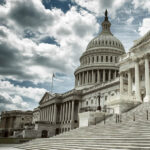Following President Trump’s April 2 press conference and Executive Order imposing additional baseline or reciprocal tariffs on products from all countries, the White House has released Annex I’s list of country-specific reciprocal tariffs and Annex II’s list of products excluded from the tariffs.
Country-Specific Tariffs and Annex I
As explained in our Trade Watch post yesterday, the 10% baseline tariffs take effect for all countries at 12:01 a.m. on April 5. Annex I’s country-specific reciprocal tariffs replace the baseline tariffs at 12:01 a.m. on April 9. Exceptions to the effective dates are provided for goods that loaded onto a vessel at the port of loading and in transit on the final mode of transit before the respective effective date and entered the U.S. after the respective date. Any countries not listed in Annex I remain subject to the 10% baseline tariffs.
The only countries that enjoy some relief from even baseline tariffs are Canada and Mexico, because goods that are USMCA qualifying remain exempt from both the tariffs announced yesterday and the previously announced 25% tariffs on products of Canada and Mexico. This decision by President Trump puts products of other countries that qualify for free trade agreement or developing country preferential treatment at a disadvantage relative to USMCA goods, although non-qualifying goods from the same countries may have a new advantage over non-USMCA-qualifying goods produced in Canada and Mexico.
For example, for a woman’s polyester knit dress of HTSUS 6104.43.2010:
- If produced in Mexico and USMCA eligible: 0% duty
- If produced in Guatemala and CAFTA eligible: 0% + 10% duty (10%)
- If produced in Mexico but not USMCA eligible (e.g., made with non-qualifying fabric or yarn): 16% + 25% duty (41%)
- If produced in Guatemala and not CAFTA eligible: 16% +10% duty (26%)
This loss of parity among countries with which the United States has preferential trading arrangements is a likely source of complaint among some industries and countries. It is unclear, however, whether the President is prepared to hear such arguments in the near future. White House Press Secretary Karoline Leavitt said on April 2: “The president made it clear yesterday, this is not a negotiation. This is a national emergency.”
Product-Specific Exemptions and Annex II
Some products, regardless their country of origin, are exempted from these tariffs, including:
- Articles subject to Section 232 tariffs, including:
- Aluminum and aluminum derivatives
- Steel and steel derivatives
- Automobiles and, when subject to the 232 duties, automobile parts
- Any articles that become subject to section 232 duties going forward
- Articles from a country subject to HTSUS Column 2 rates (Belarus, Cuba, North Korea, and Russia)
- Humanitarian deliveries, mailed letters, passenger baggage, and other articles identified in 50 U.S.C. 1702(b)
- Other items enumerated in Annex II, including copper, pharmaceuticals, semiconductors, lumber articles, certain critical minerals, and energy and energy products.
The President has already indicated that he plans to impose additional tariffs on pharmaceuticals, semiconductors, and lumber. Other Annex II items, such as energy and critical minerals, are identified by the President as not being available in the United States.

